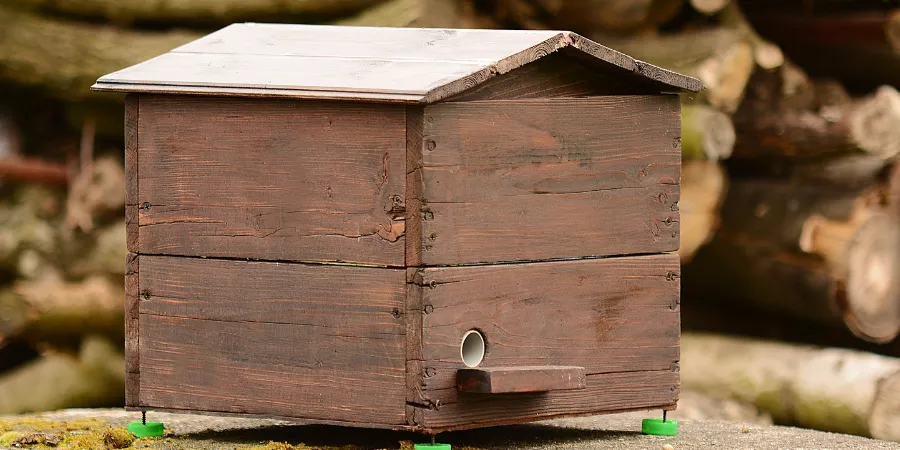When you are in the world of bees, you get various questions such as do wasps make honey, do hornets make honey and most often Do bumblebees make honey?
Bees and bumblebees are the two most famous species of bees. Although many people think that these two species live similarly and that what is true for bees is also true for bumblebees, there are interesting differences between them.
If you’ve ever wondered whether bumblebees make honey or not, you’re in the right place to find out. Through this article you will learn some of the basic characteristics of bumblebees and their life, how they differ from bees and what they are useful for.
I will explain how bumblebees produce honey; I will also share the differences between bumblebee honey and bee honey.
Basic Characteristics Of Bumblebees
Bumblebees are just one of 25,000 species of bees. Bumblebees, like bees, are cooperative insects. There are about 200 species of bumblebees. Their nesting depends on the species. Bumblebees are large, and their body is covered with unusually thick hairs, which allows them to actively produce heat and is perfectly adapted to activities in cold conditions. Their special feature is the ability to regulate their own temperature.
Like bees, bumblebees collect nectar from flowers and pollen to feed young. Bumblebees do not have a hearing apparatus and it is not known how they recognize sounds, but they can feel the vibrations of sound through the surface on which they stand.
And another special feature, bumblebees are the best natural pollinators in closed greenhouses.
How long do bumblebees live? The age of bumblebees is shorter than that of bees: in the fall, most family members die. Only young fertilized females that hibernate in grass or burrows in the ground survive, and in the spring trips, find a place for a new home and lay eggs, giving life to a new family of bumblebees.
Bumblebee Colonies
Bumblebees make colonies that are much smaller compared to bee colonies. The nest generally contains about 50 individuals, and can be made in dense grass or in tunnels in the ground built by other animals.
Bumblebee colonies are annual and die off in late summer. For this reason, bumblebee colonies never have time to grow very large; they are usually small compared to bees. The most populous colonies of bumblebees have a maximum of about 250 individuals, which is nothing for a bee colony. The average bee colony has 50,000 bees.

Roles In The Colony Of Bumblebees
Within the bumblebee colony, as well as among bees, each individual plays its part. The head of the family is a female who never leaves the nest and is only engaged in reproduction, laying eggs.
The largest part of the family consists of workers who collect nectar and pollen, and the collected nectar is also processed into honey. One working female bumblebee is able to pollinate up to 30 flowers in one minute, while a bee manages to collect nectar with only 10-12 flowers. Another large group is bumblebee drones that are busy building combs and caring for larvae.
Bumblebee Queens And Mating
As summer nears to its end, bumblebee colonies begin to form new queens. As with bees, queens leave the colony to mate with males from other nests, but bumblebee queens change partners much less.
While a queen bee can mate with as many as 40 males, a bumblebee queen usually mates with only one. After mating, the new queen must be fed plenty of nectar to prepare for hibernation. It hibernates underground and if it survives, it will come out in the spring to start its own colony.
Nest Making Places
Bumblebee queens must start their colonies from scratch. Nesting duties fall solely on the queen. It starts with finding a suitable nesting place. Most bumblebee species nest underground in old rodent dens, but some will occupy cavities in birdhouses or piles of wood.
Once in her nest, the queen lays her first round of eggs. These eggs will hatch into workers that will help them find food and raise brood. Once it has enough manpower, the bumblebee queen withdraws from other tasks and performs only the vital task of laying eggs.
Method Of Pollination In Bumblebees
Bumblebees, like bees, visit the flowers of plants and have the same method of pollination. Their movements range mainly from 1-2 km from the colony. Bumblebees have a habit of visiting the same flowers every day as long as they produce nectar and pollen. Bumblebee flight speeds can be as high as 54 km/h.
Bumblebees have the option of sonic pollination or buzzing pollination.
Bumblebees are very important pollinators of both crops and wild plants. They play a very important role in agronomy as specific pollinators because they can pollinate cultivated plantations that other pollinating insects cannot, thanks to their specific sonic pollination.
Bumblebee colonies are often used in greenhouses and hothouses for pollinating tomatoes because the frequency of the buzzing sound most effectively releases pollen from pollen.
The physical structure and size of the bumblebee are also important. When searching for nectar, the bumblebee pollinates other types of flowers that other insects and bees avoid due to the size and strength of the body as well as the length of the tongue.
Bumblebees do not process nectar into honey, but only store it.
Interesting Fact: Bumblebees Are More Efficient At Pollination Than Wind
There is almost no country where bumblebees are not used as pollinators. In 2004, as many as 1,000,000 bumblebee colonies were used worldwide. Today in advanced agricultural countries bumblebees are regularly used as pollinators for 20 species of agricultural crops and inevitably, in seed production.
Bumblebees are more effective in pollination than wind, machine/manual shaking of plants, the use of hormonal preparations or the most famous pollinator, the honey bee.
Do Bumble Bees Produce Honey?
Bumblebees can produce honey just like bees. Few people know that bumblebees also collect nectar, but make very small supplies; honey is only needed to feed the larvae. At the same time bumblebee honey has many useful properties. The price of such honey is high, because it is found in nature, not as often as bees. Some beekeepers specialize in bumblebee honey, and you can find their products online.
Bumblebees collect nectar because it is their vital food. Nectar is an excellent source of energy. In the spring, when the bumblebee queen comes out of hibernation, the first thing she needs is food. Without it, she will not be able to start laying eggs.
It comes out and collects nectar which is then returned to the nest and stored in small wax cells. This nectar will be consumed fairly quickly and this is the biggest difference between the way bumblebees use nectar and the way honey bees use nectar. In bumblebees, the nectar does not go through the transformation needed to turn it into honey because it is consumed fairly quickly.
How Is Bee Honey Different From Bumblebee Honey?
Since bumblebees can pollinate many more plants (almost all), then, compared to domestic bees, the composition of their honey and pollen is also more diverse.
Bumblebee honey has a liquid consistency reminiscent of sugar syrup. Also, it is much lighter than bee honey. The fact is that it contains a larger amount of water. The product also differs in color.
Bumblebees form honeycombs of unusual shape. On the outside, they look jug-like. They are numerically inferior to beehives, but significantly higher in quantity. In the lower part, each jug is slightly larger. Thus, when sealed, it becomes like a sack.
Also, honey has a diverse pollen composition, which includes pollen of basic plants, as well as medicinal black root, red clover, picculus (“Rooster Head”), etc. Due to the fact that the bumblebees process more plants, their honey has a more diverse composition. It contains proteins, carbohydrates, minerals.
The presence of zinc, copper, iron, potassium, cobalt explains the beneficial effect of honey on the human body.
As it is more liquid, it is well stored at a temperature not higher than + 3 ° C. When heated to 5-8 ° C it begins to ferment.
Useful Properties Of Bumblebee Honey And Treatment
The benefits of honey produced by bumblebees are obvious. It is very nutritious and high in calories. Positive components can help eliminate:
- digestive disorders,
- respiratory diseases, asthma, bronchitis;
- liver problems;
- disorders of the excretory and reproductive systems.
Bumblebee honey helps treat dry cough. To do this, add one teaspoon and a little butter to the warm milk.
It cannot be used if there is no certainty that there is no allergic reaction to the substance. In that case, it will cause the body not to feel well, but that it will do no harm.
Do Bumblebees Eat Honey?
The answer is… YES! The diet of bumblebees is not very similar to the diet of honey bees. It consists mainly of nectar, pollen and honey. This mixture contains all the necessary proteins and sugar to form a healthy diet!
Stings Of A Bumblebee
Do bumblebees die after stings, as do bees? Fortunately for them, the answer is no. Unlike honey bees, bumblebees have smooth stingers that allow them to sting multiple times.
Although they have this ability, bumblebees are much more obedient and will only sting when they are cornered or if their nest is disturbed. Thus, bumblebees belong to the group of non-aggressive insects. Even if you make the mistake of disturbing a bumblebee colony, you’ll probably have fewer stings for it because bumblebee nests are smaller and there will be fewer bumblebees to fight.
Damage Caused By Bumblebees
In rare cases, bumblebee stings can cause death. If, as a result of the sting, there is a strong swelling with increased sweating, difficulty breathing, it is necessary to seek medical help immediately, because it is possible that it is an allergic reaction. It is even possible that the allergy will appear only after a few stings. Their venom is much weaker than that of bees.
Protection From Bumblebees
Bumblebees only sting when they feel extremely threatened. So don’t chase or fight them, and stay calm until they get away. Avoid floral perfumes.
It is best to rub the sting site with lemon, vinegar or a little salt as soon as possible. This will reduce the swelling. A cold compress will reduce pain and itching. If you have it on hand, it is good to put a slice of chopped onion in the place of the sting. If you have an allergic reaction, call an ambulance.
END
Bumblebees are unfortunately an endangered species in many countries due to the uncontrolled use of pesticides.
In Great Britain, out of nineteen known genera of bumblebees, three genera have completely disappeared, and in eight genera the survival is seriously endangered.
Reducing the diversity of the bumblebee genus can cause unforeseeable consequences, on a large scale, and thus lead to the endangerment of specific flora and correlations in the ecosystem by breaking the life chains.
And most importantly, now you have the answer to the question of do bumblebees make honey. Most of us will never taste bumblebee honey. Fortunately, bees produce enough variety of honey for us to enjoy this natural sweet.

